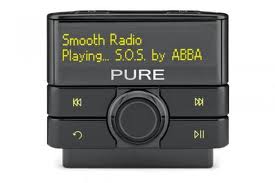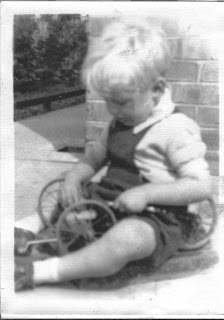The long standing appointment with trimmer John Richardson looms ever closer, with friend Geoff's trailer booked for Monday 4th March to take the car to Shildon. Two major jobs need to be completed in the next few days, neither of which I had really planned to do at this stage. John tells me that he needs to be able to drive the car in and out of his workshop so it needs to be operational - just. It also dawned on me the other day, that in order to make and fit the hood (soft top), the windscreen would have to be in place - duh!
So with two weeks to go, the snoozing and socialising will have to stop. John has already completed the dash board, seats, armrest and door panels and I would have to say that he has made a superb job of them. The remaining work, hood, tonneau cover, cockpit rolls, side screens and carpets will be tailored specifically to the car, hence the need for it to be away at his workshop for the best part of a month.
![]() |
| Special dispensation given to store seats at home for a while |
![]() |
| Exceptional job by John Richardson of Shildon County Durham |
The seats in particular have worked out very well. The bases are close to original but the backs have been changed from the slide around variety to bucket. This also allows for the central armrest to have an opening top with storage inside - something in very short supply in a 120 OTS.
This is an ideal place to hide the controls for the ICE kit and other occasional use switches, plus a switch to activate a small digital display showing battery voltage, to avoid fitting a voltmeter, much more use than an ammeter if the cars been fitted with an alternator.
I had some nice period switch labels engraved but couldn't resist having a second set made up for the benefit of the grand kids. Telling grandson Freddy that he shouldn't on any account open the lid between the seats in Bobsy's 'special car' then leaving him to play should be interesting, especially when the 'countdown' LED's illuminate immediately after he's activated the eject switch.
![]() |
| Work in progress with alternative label for grand kids |
With the engine installation imminent, the past week has been spent fitting out the engine bay and completing any other jobs which would be harder to do with the engine in place. The plan is to fit the engine on Sunday 17th Feb and hopefully most of the ancillary bits, exhaust system etc. A few years back, young friend Kev Woods gave me hand to remove and re-fit the engine in my 140 when it developed an oil leak and will be on hand again to assist which will make the job a great deal easier. Kev's day job involves maintaining heavy plant and machinery, often on site, so for him, this task should be fairly straightforward and his help invaluable.
![]() |
| Engine bay - almost ready for engine installation on 17th Feb |
One item I wasn't too happy about re-using was the brake fluid reservoir - made from glass !!
Thinking about this, I realise that the early 120 master cylinder (also used on the 140) effectively has its own reservoir holding around half a pint of fluid which in turn is kept topped up by the glass one. I can only guess that the glass reservoir was added to make it easy to check the fluid level and top it up. In any event, it was a very satisfying part to recondition. New rubber seals were made and fitted top and bottom and the metalwork powder coated in a colour very close to the original. Local and ever helpful company Hawk fasteners actually had in stock the tiny rivets used to fasten the brass manufacturers plate back in place.
![]() |
| Master cylinder with its own half pint reservoir - ready for assembly |
|
|
|
![]() |
| Glass brake fluid reservoir - scarey! |
![]() |
| Lovely original brass plaque |
MiscellanyThe weather today, Saturday 16th, has taken a turn for the better, so time to disinter the 140 from it's winter slumbers. I've run the engine and moved the car a few feet back and forth every couple of weeks, but this will be it's first run out this year. As ever it started without any fuss and ran beautifully with all gauges indicating healthy levels of everything.
Just around the corner from my workshop is a newly re-furbished building dating from 1916. Originally the HQ for the Cargo Fleet Iron Company which peaked in output in the 1950's and may even have made the steel used in the 140's construction. The entrance makes an interesting backdrop for a photograph.
Preceding this building by around fifty years, Prime Minister William Gladstone, visiting Middlesbrough's Iron Foundries in the 1860's described the town thus :
"This remarkable place, the youngest child of England's enterprise, is an infant, but if an infant, an infant Hercules"
I can't help but wonder what he would say if he could see the town in middle age.
![]() |
| 140 after its winter break, a little dusty but otherwise superb |
Now here's an extraordinary thing. Last year I insured my ancient
Audi S4 Avant with Saga and literally halved the premium from the previous company. (never thought I'd see Saga and S4 in the same sentence). My Renewal Schedule arrived the other day and around the same time an invitation to renew my AA subscription. An all singing and dancing Gold family membership, this had previously been paid by the company by recurring Direct Debit so the gradually increasing cost, this time £202.96 had not been flagged up.
Now retired with the company DD cancelled, it would from hereon be up to me. So, I had two calls to make, Saga and the AA. Fortuitously I chose Saga first.
Answered by a UK call center, no multiple choice button punching, recorded messages and music, just a charming young man called Zack, who efficiently arranged my renewal. He went on to pitch for breakdown cover, in conjunction with - you've guessed - the AA. I read from my renewal document exactly what £202.96 provided and explained that was precisely what he needed to quote for, stressing each aspect, family membership etc. He absolutely confirmed it would be identical, and quoted me £37.00 yes - thirty seven pounds! I look forward to receiving the documents to see if this can be true.
Next Post end of February



























